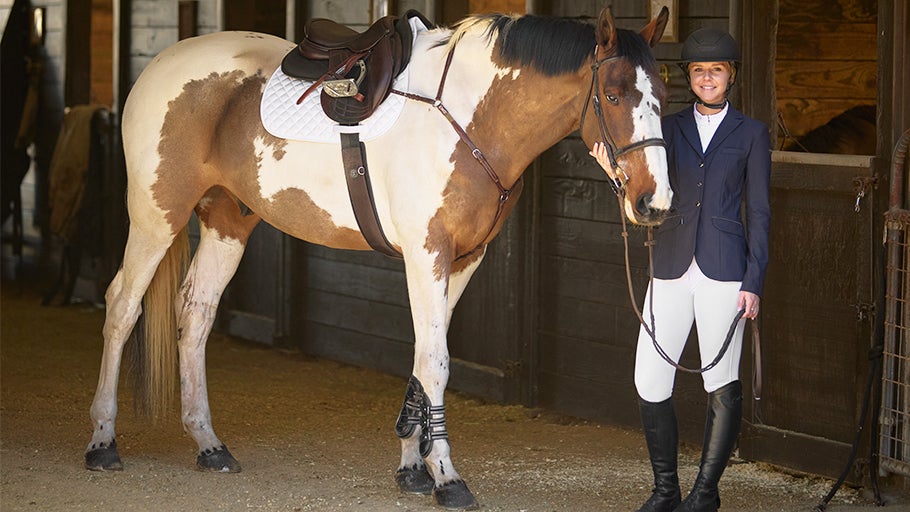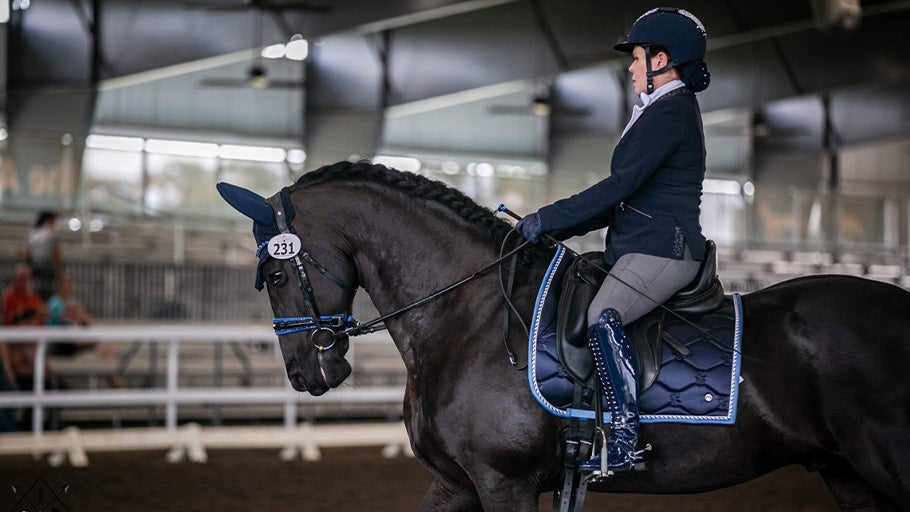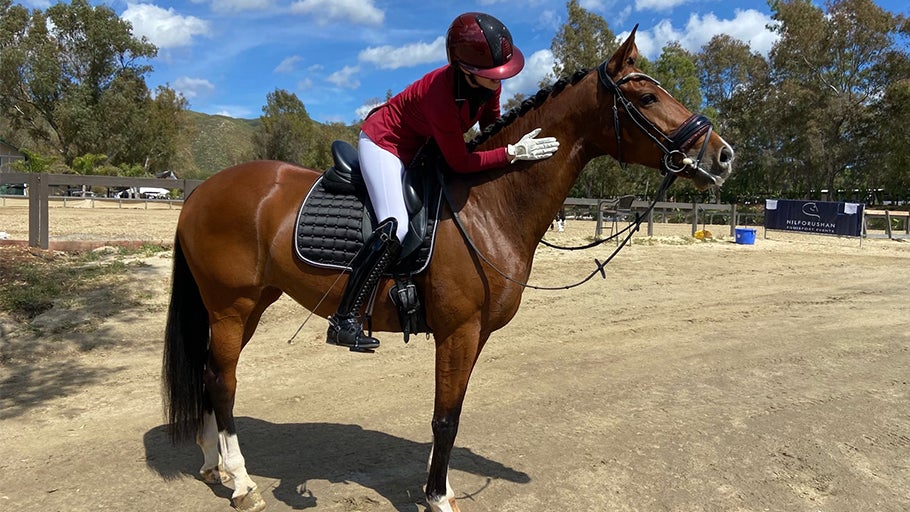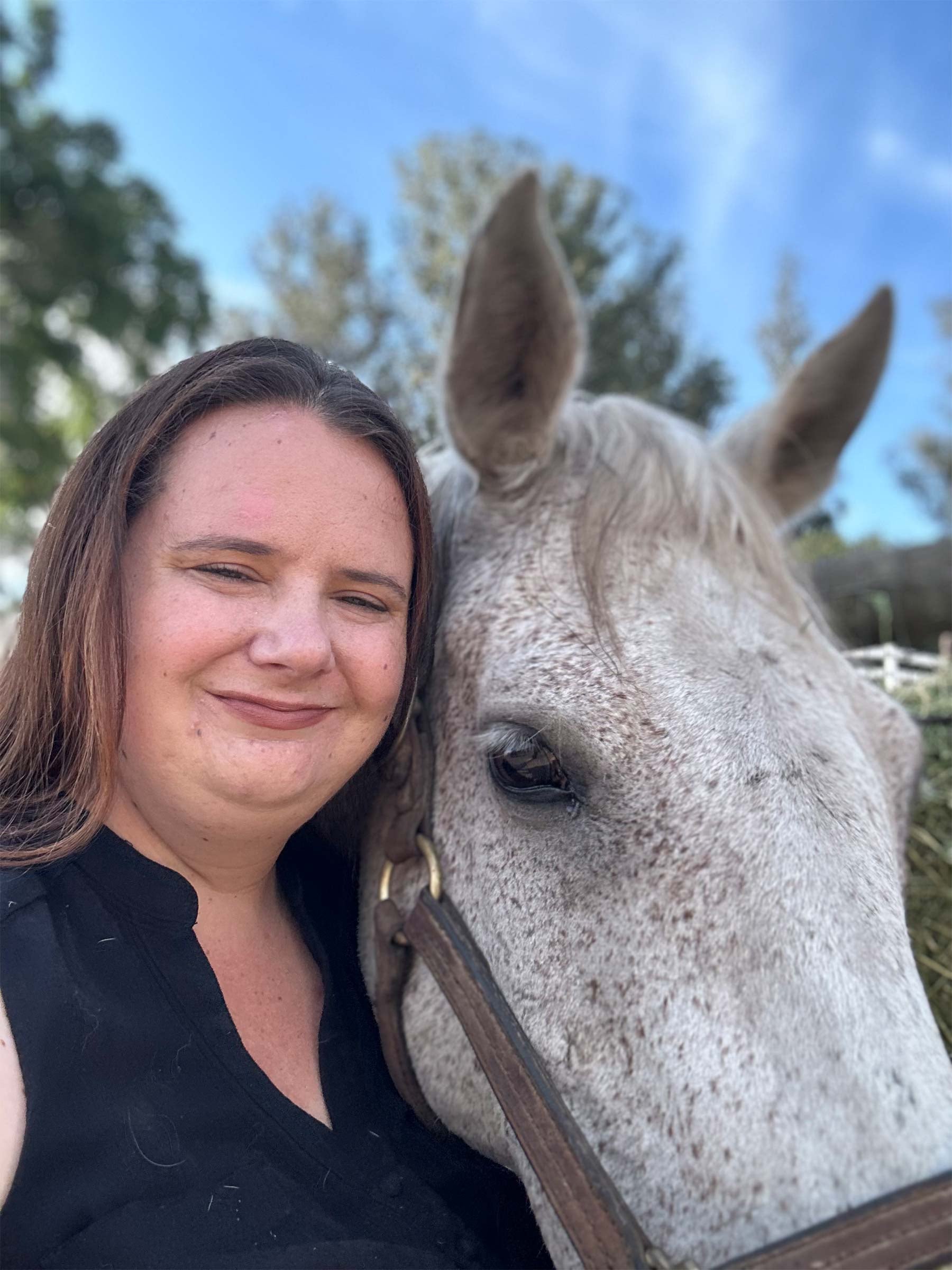
How to Measure and Choose a Horse Show Coat
A well-fitting show coat is a surefire way to help boost your confidence as you and your horse step into the show ring. You'll truly be putting your best foot (or hoof!) forward with a look that you are comfortable in. However, the RW Crew knows that finding a beautiful new coat isn't as simple as waving a magic wand and voila: the first coat you try fits! Sometimes, finding a new show coat can be an experience in and of itself.
If you're starting the search for your very first show coat or are on the hunt for a new one, you're in the right place. In this article, we will review exactly which measurements you'll need to find a show coat and how to take them. We'll also address key factors to take into consideration while you shop for a show coat. Finally, we'll share our top selections for the best show coats to help you find a great place to start looking!
Measuring for a Horse Show Coat
First things first: when shopping for a new show coat, as with any apparel, the primary step comes with knowing what size you'll need. We all know what comes next—time to break out the measuring tape! To take the following measurements, we recommend having a cloth measuring tape, pen and paper for note taking, and a helpful barn buddy.
To get started, we suggest either donning the show shirt you intend to wear with your new coat or having a fitted schooling shirt on, so you can get a good idea of what the measurements underneath the coat will actually be (and how the coat will rest on your body). When taking each measurement, it is important to hold the measuring tape snugly against you—but not too tight—to ensure accuracy.
Chest Measurement
To obtain your chest measurement, wrap the measuring tape underneath both arms and around the fullest part of your bust. This may be done on your own, but it can be helpful to have a buddy to read off the measurement for you (the same goes for the rest of the measurements).
Sleeve Length
Your barn buddy will definitely come in handy for this measurement! To obtain this, bend your elbow at a 90-degree angle, place the tape at the point of the shoulder, run it down the shoulder to the elbow, then down to the wrist.
Waist Measurement
Wrap the measuring tape around your natural waist at the narrowest part. This area can be found by bending from side to side a few times and is often located just a little bit above your belly button. Again, be sure that the tape is snug but not so tight that you cannot move comfortably and freely (as you'd want in your new coat)! This measurement will be the same as the waist measurement you would use when selecting a pair of pants or breeches.
Hip Measurement
To find your hip measurement, measure entirely around the fullest part of your hips and around your hip bone. This measurement may be needed for more tailored styles of show coats.
Shoulder Width
Using your trusty measuring tape, have your buddy measure across the entire width of your shoulders from one end to the other. They will need to start at the point of the shoulder on one side and reach all the way across to the point of the other shoulder.
Center Back Length
This one will be tough without a buddy to help! For this measurement, you'll need to have the measuring tape placed at the base of your neck and run down to where you would like your jacket to end—ideally just past your hips near your tailbone.
Fit Considerations
Once you've gathered your measurements and it's time to start trying on show coats, there are several important factors to take into consideration. These include the cut of the coat, how it lays against you, and more, so you can choose an option that's sure to fit you well.
The overall look should be clean, professional, and tailored, but not so form-fitting that you are uncomfortable or cannot ride to your best ability. The body of the coat should fall to just past your hips and lie smoothly against your chest without bunching up or pulling. While in the saddle, the ends of the coat should lightly brush the seat. If possible, it's always a good idea to sit in a saddle if there is one readily available, or mimic a riding position to be sure everything is fitting properly and comfortably (as it would while you ride).
Following this, the shoulders should fit snugly but not so snug they are restrictive, ideally with the seams aligning with the edges of your shoulders. A good check to ascertain the fit in the shoulder is to cross your arms across your chest as if you are hugging yourself. If you can do this without being restricted, you're in good shape! The sleeves should fall just past your wrist when your arms are hanging loosely by your side. This is another good chance to mimic your riding position, bending your arms as you would during a ride to make sure they fall as you need them to.
When it comes down to it though, the final say on what looks the best is ultimately up to you. Your personal preference on how the coat looks matters, and if you prefer a slightly shorter length or fuller fit, that's completely your decision! The above information is merely a set of general guidelines to keep in mind throughout your search. Your comfort is important, and the confidence afforded by a coat you feel good in can translate to your performance in the show ring.
That being said, it's also necessary to make sure that your show coat meets the show requirements and fits within the regulations of your discipline. If you're not sure what you're allowed to wear in certain disciplines, be sure to check their regulatory website. The USEF governing rules are a great resource to learn what can be worn across different competitions in the varying disciplines.
Best Women's Equestrian Show Coats
Feeling (and looking) good can give you the extra confidence you need to achieve your peak performance. A show coat that is flattering and classy can help you stand out to impress the judge. But looks aren't everything! Being comfortable in the saddle can make or break your performance. Our picks for best show coats take into account styling for each discipline, freedom of movement, and breathability. Discover our favorite coats for a variety of disciplines and needs!
Best Dressage Coat
LeMieux Zoe Show Coat
Dazzle the judges as you march down centerline in the LeMieux Zoe Show Coat! Boasting a sophisticated silhouette and a short tailed design, this show-stopping coat creates a polished look that will have you brimming with confidence in the show ring. Sparking details on the collar, sleeves, and belt give a subtle flair as carefully tailored sleeves complete a sleek fit. The split back vent allows Zoe to move with you throughout your test, and as an added bonus, discreet mesh underarms provide the ventilation needed to stay cool, calm, and collected as you compete.
| Key Features: |
Short Tail Split Back Vent Classic Four Button Front Discreet Mesh Underarms Subtle Sparkle Trim on Sleeves, Collar, & Belt |
Best Hunter Show Coat
Kerrits Affinity Aero Mesh Show Coat
The elegant and breathable Kerrits Affinity Aero Mesh Show Coat is a great choice for the hunter ring. The technical mesh offers excellent airflow without being sheer. The tapered waist creates a flattering silhouette that suits a variety of body types, and the double-lined collar is a lovely yet subtle touch. The interior zipper adds security and a crisp fit, while the over buttons keep things looking formal!
| Key Features: |
Textured, No-See Mesh Flattering Feminine Silhouette Hidden Front Zipper Double Backed Upper Collar Three Button Front |
Best Jumper Show Coat
Kerrits Stretch Competitor Koat Show Jacket
Keep cool, calm, and collected as you tear across a show jumping course in the Kerrits Stretch Competitor Koat Show Jacket! We certainly appreciate that this coat is packed full of features to suit the needs of ambitious riders. A traditional styling keeps you looking polished and professional, while a super stretchy and lightweight Dynamic Extreme fabric prevents overheating, especially on sunny and warm show days! Plus, with a breathable and UV protective finish, the Stretch Competitor "Koat" has everything you need to look good and feel good throughout every round.
| Key Features: |
Provides UV Protection Four Button Style Stretchy, Wrinkle Free Material Offers Exceptional Freedom of Movement Durable and Breathable Dynamic Extreme Fabric |
Best Eventing Show Coat
LeMieux Dynamique Show Jacket
The LeMieux Dynamique Show Jacket is the perfect option for eventers who need a coat suitable for the dressage and show jumping arenas! The four-way stretch material moves with you, while the recovery elements allow it to maintain its shape even with heavy use. Breathable mesh side panels give you excellent airflow while maintaining a classic look and style. A hidden front zipper under a three-snap closure provides security for those powerful jump rounds. Subtle sparkle trim on the pocket and back adds a touch of flare to a classic style!
| Key Features: |
Four-Way Stretch Fabric Recovery Technology to Maintain Shape Breathable Mesh Side Panels Front Zip and Snap Closure Sparkle Beaded Pocket and Back Belt Accents |
Best Mesh Show Coat
AA Horseware Motionlite Show Coat
If you're searching for an ultra-breathable coat that doesn't sacrifice class, look no further. The AA Horseware Motionlite Show Coat is a popular option for various disciplines, due to the exceptionally stretchy mesh fabric that has no lining but appears completely solid when worn. The AA Motionlite was the winner of the 2016 Innovation Award for a reason! Ultra-stretch fabric ensures you have full freedom of movement whether you're soaring over fences or marching through an extended trot. This flattering, contoured coat also features a hidden front zipper and zip pockets with three interchangeable buttons.
| Key Features: |
Highly Breathable Mesh Construction Quick-Drying for Moisture Management Lightweight With No Lining Interchangeable Buttons Machine Washable |
Best Budget Show Coat
Dublin Hanna Mesh Tailored Show Coat
Cool and classy doesn't have to cost you! The Dublin Hanna Mesh Show Coat features an open mesh fabric that allows airflow and stretch for comfort during warm-weather showing. This attractive coat has thoughtfully placed seams and a feminine silhouette that flatters a variety of body types. It's a perfect option, regardless of your chosen English discipline! This wallet-friendly coat is suitable for every show ring. With three interchangeable buttons and a hidden zipper, this coat is right at home in a variety of disciplines.
| Key Features: |
Breathable Stretch Mesh Fabric Interchangeable Three-Button Front Hidden Zip Closure Under Buttons Double Back Vents |
Frequently Asked Questions
Can I choose any color show coat?
While some colors go in and out of style with the seasons, others are timeless classics. Your choice of color may also depend on your chosen discipline. For example, black, navy, and hunter green are always safe options no matter which discipline you are showing in. More often than not, hunter and equitation classes lean toward these classic colors. However, more colorful coats—even with some added bling—are now allowed in the dressage court and are being seen more regularly in the jumper ring as well.
Can I wear a mesh show coat in any discipline?
Yes, mesh show coats may be worn in any discipline. These coats are great for keeping riders cool and comfortable on the warmer-than-usual show day. Furthermore, they tend to offer more flexibility and freedom of movement.
What is the difference between a shadbelly, dressage coat, and hunt coat?
At first glance, a hunt coat may resemble a well-fitted blazer and is designed and worn as a nod to the traditional coats worn on fox hunts, from which the sport developed.
Shadbellies are worn in upper-level dressage (fourth level and up) and in some hunter classes. Think derbies, stakes, and classics. In hunter classes, these represent the traditional coats worn on formal fox hunts, though they are shorter and unweighted as opposed to their dressage counterparts.
A dressage coat that would be used by riders competing below fourth level is similar to a hunt coat, but the length will be slightly longer. Plus, the coat features four buttons as opposed to three.
Does the number of buttons on the show coat matter?
No! When it comes down to it, the number of buttons on your show coat does not really matter in the show ring. The number of buttons on a coat is mainly just a matter of tradition these days. For example, dressage coats traditionally have four buttons while hunt coats have three buttons. That's why you will most often see dressage riders in four-buttoned coats and hunters in coats with three buttons. However, you can absolutely wear a coat with three buttons in the dressage court and vice versa. In fact, many three-day event riders have one show coat that they wear in both the dressage and show jumping phases!
Closing Thoughts
Shopping for a new show coat can be a journey. From finding one to fitting one to combining a suitable fit and style for your discipline, there are a lot of factors to take into account! We hope that this article has been helpful in guiding you through the ins and outs of show coat measuring and fitting to give you the tools needed to enter the show ring brimming with confidence in your new coat. If you have any questions or need help finding that perfect show coat, our friendly customer service staff is here for you! Please reach out at 1-800-620-9145 or info@ridingwarehouse.com for further assistance with your showing needs. Happy riding!
Related Articles















